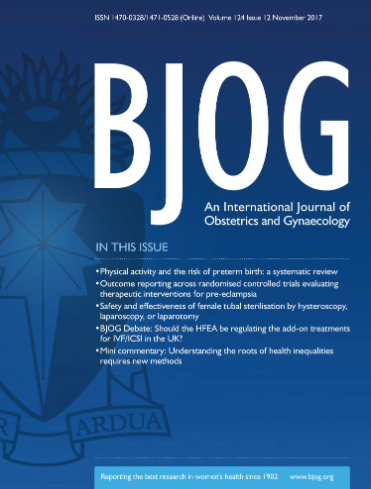Effect of Preimplantation Genetic Testing for Aneuploidy on Live Birth Rate in Young Women With Recurrent Implantation Failure: A Secondary Analysis of a Multicentre Randomised Trial
Abstract
Objective
To investigate the benefit of preimplantation genetic testing for aneuploidy (PGT-A) in recurrent implantation failure (RIF).
Design
Secondary analysis of a multicentre, randomised, double-blind, placebo-controlled clinical trial.
Setting
Eight academic fertility centres in China, 2018–2020.
Population
Overall, 485 infertile women aged < 38 years were evaluated. They had a history of two or more unsuccessful embryo transfer cycles with at least three good-quality embryos that had been transferred cumulatively and underwent a single blastocyst transfer with or without PGT-A. Those with thin endometrium or recurrent pregnancy loss were excluded.
Methods
Patients were categorised into PGT-A and non-PGT-A groups. All pregnancies were followed to delivery. Pregnancy and neonatal outcomes were obtained from obstetric and neonatal medical records. Propensity score matching (PSM) and multivariate logistic regression models were applied to adjust for potential confounding factors.
Main Outcome Measures
LBR per embryo transfer.
Result(s)
There was no significant difference in LBR between the PGT-A and non-PGT-A groups both before (39.1% vs. 41.5%, p = 0.760) and after (39.1% vs. 40.6%, p = 0.862) PSM. Unadjusted and adjusted logistic regression models revealed no beneficial effect of PGT-A on LBR per embryo transfer (crude odds ratio: 0.91, 95% confidence interval: 0.49–1.69; adjusted odds ratio: 1.04, 95% confidence interval: 0.53–2.03). The incidence of maternal and neonatal complications was not significantly different between the groups.
Conclusions
Patients with RIF aged < 38 years do not benefit from PGT-A. Thus, factors other than genetic abnormalities may contribute to this clinical conundrum.

 求助内容:
求助内容: 应助结果提醒方式:
应助结果提醒方式:


